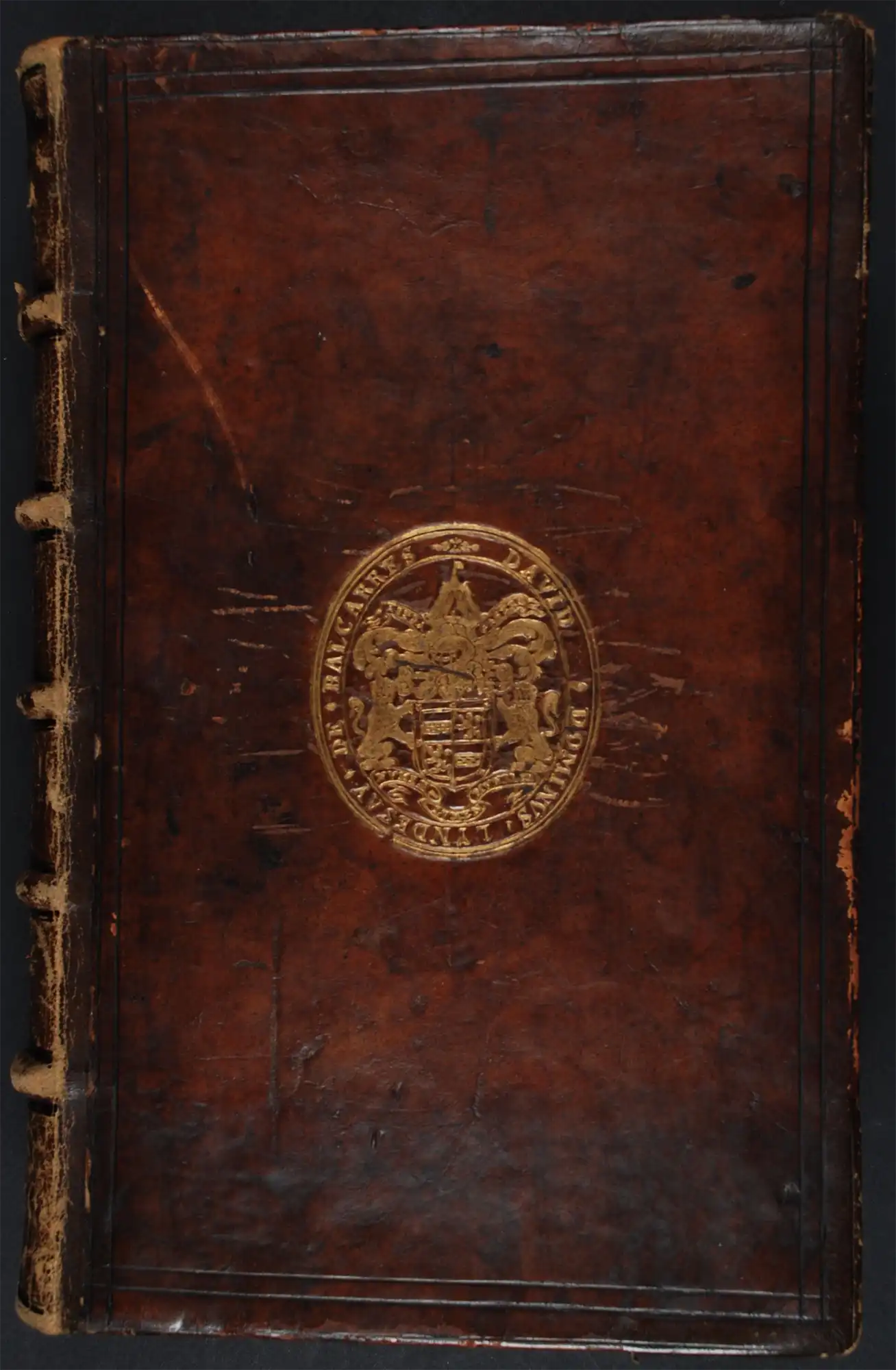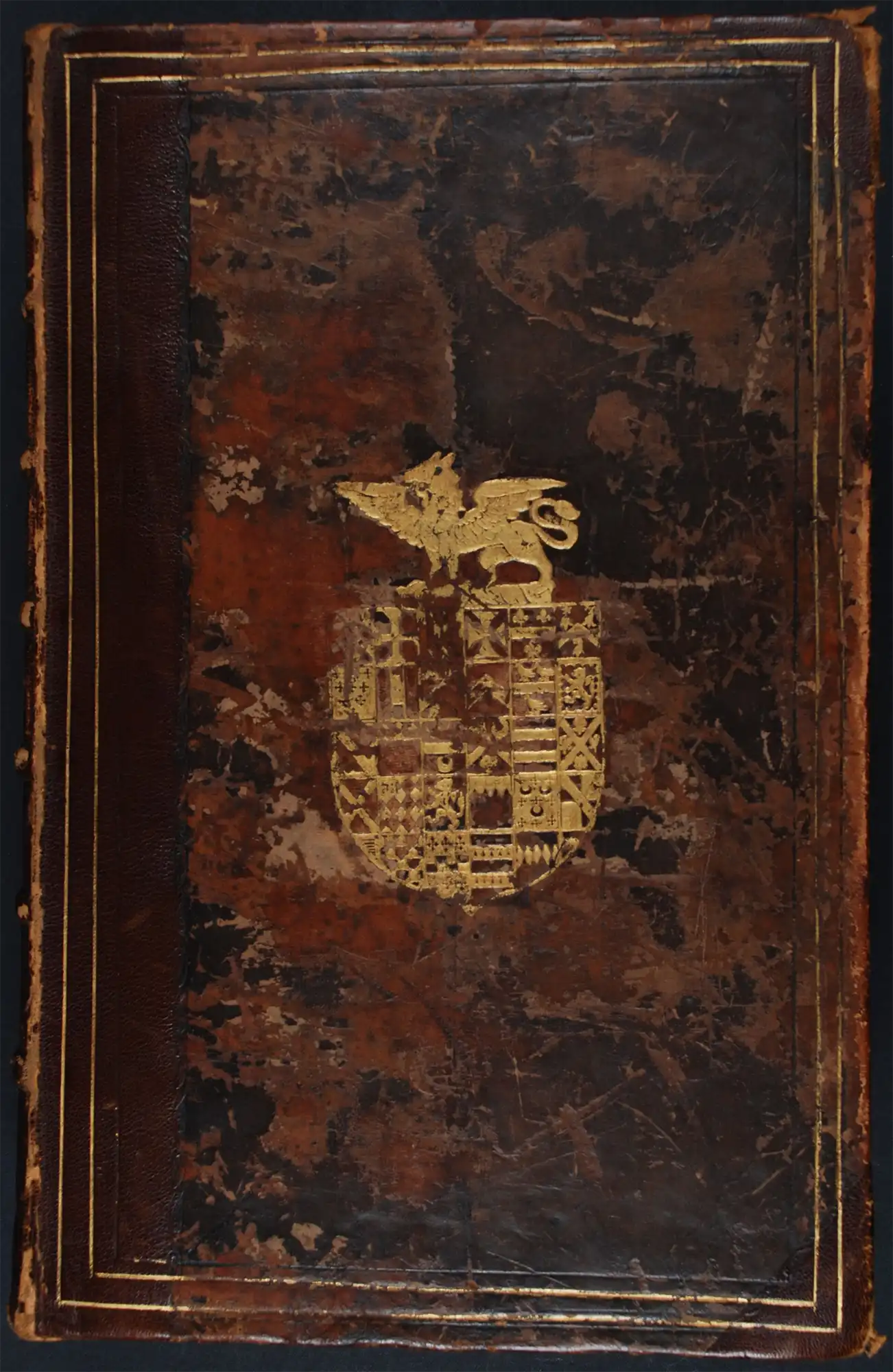Case 3
- Armorial Bindings
![[Bible. Latin Vulgate]. England, thirteenth century.](https://www.reedgallery.co.nz/__data/assets/image/0017/601127/3a.webp)
[Bible. Latin Vulgate]. England, thirteenth century.
A book with an armorial binding is one which has been externally stamped with a coat-of-arms, or any part of a coat-of-arms, such as a crest, to signify individual or family ownership. This practice began in continental Europe in the late fifteenth century and took root in Britain around the middle of the sixteenth century, after which it became widely popular.
Made in England during the second half of the thirteenth century, this manuscript Vulgate Bible (Reed MS 1) is bound in mid-nineteenth century dark brown blind-stamped morocco over wooden boards. It was bound by Francis Bedford (1799-1883) for John Cust, Baron Brownlow (1779-1853) of Belton House, Lincolnshire, and bears the Brownlow arms in gilt on the sides, with brass claps and catches, and gilt edges.
![[Bible. Latin Vulgate]. England, thirteenth century.](https://www.reedgallery.co.nz/__data/assets/image/0019/601129/3aa.webp)
[Bible. Latin Vulgate]. England, thirteenth century.
A book with an armorial binding is one which has been externally stamped with a coat-of-arms, or any part of a coat-of-arms, such as a crest, to signify individual or family ownership. This practice began in continental Europe in the late fifteenth century and took root in Britain around the middle of the sixteenth century, after which it became widely popular.
Made in England during the second half of the thirteenth century, this manuscript Vulgate Bible (Reed MS 1) is bound in mid-nineteenth century dark brown blind-stamped morocco over wooden boards. It was bound by Francis Bedford (1799-1883) for John Cust, Baron Brownlow (1779-1853) of Belton House, Lincolnshire, and bears the Brownlow arms in gilt on the sides, with brass claps and catches, and gilt edges.

Testamenti veteris Biblia Sacra, sive libri canonici priscae Judaeorum ecclesiae a Deo traditi … Hanoviae: Typis Wechelianis, Sumptibus Danielis ac Dauidis, 1624.
This copy of the Tremellius-Junius Latin Bible is bound in seventeenth century calf with gilt armorial stamp at the centre of both boards. This stamp (and a bookplate inside) is of a Scottish nobleman and staunch royalist, David Lindsay, 1st Lord Lindsay of Balcarres (1587-1642).

Testamenti veteris Biblia Sacra, sive libri canonici priscae Judaeorum ecclesiae a Deo traditi … Hanoviae: Typis Wechelianis, Sumptibus Danielis ac Dauidis, 1624.
Open image in new window

The text of the New Testament of Iesus Christ, translated out of the vulgar Latine by the papists of the traiterous seminarie at Rhemes … by W. Fulke. London: Printed for Thomas Adams, 1617.
This copy of the Rheims and Bishops’ Bibles, in parallel columns with the commentary of William Fulke (1538-1589), is bound in seventeenth century leather and bears the armorial stamp of Thomas Wentworth, 1st Earl of Strafford (1593-1641).
Wentworth was an English statesman who served in parliament and was a supporter of King Charles I.
A stern figure, he served as Lord Deputy of Ireland (1632-1640) before returning to England to become a leading advisor to the King. Condemned to death by Parliament, he was executed in 1641.

The text of the New Testament of Iesus Christ, translated out of the vulgar Latine by the papists of the traiterous seminarie at Rhemes … by W. Fulke. London: Printed for Thomas Adams, 1617.
Open image in new window
![[Bible. Latin Vulgate]. England, thirteenth century.](https://www.reedgallery.co.nz/__data/assets/image/0017/601127/3a.webp)
![[Bible. Latin Vulgate]. England, thirteenth century.](https://www.reedgallery.co.nz/__data/assets/image/0019/601129/3aa.webp)

